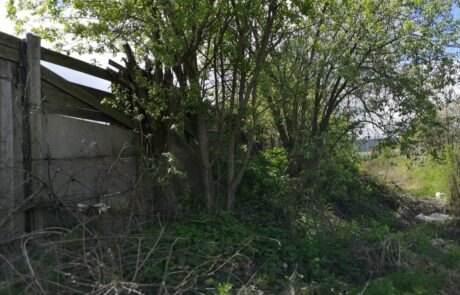Tallinn Paljassaare Road 17 woody plants and herbaceous plants survey
Address: Certain part of Paljassaare Road 17 property, Tallinn, Harju County
Area: 0,9 hectares
Time of survey: 2021
The area of interest is located in the North Tallinn district of Tallinn, bordered by a railway from the West.
The property contains buildings predominantly in poor condition, and the area between the buildings is used for storing various types of waste – from household waste to construction waste. Piles reaching several meters in height, made parts of the area inaccessible and dangerous.
The site has been used for industrial purposes for a certain period of time, with most of the area covered in hard surfaces – asphalt, gravel, or other materials. Waste materials has been extensively dumped in many places.
Vegetation has begun to grow over and between the waste heaps, and the waste has also been piled between existing trees, leading the trees to poor conditions – such as growth deformities, trunk damage, and broken branches. Much of the soil has been compacted by heavy machinery, and herbaceous vegetation is mainly found at the edges of the property, around isolated trees, around the building foundations, or on soil or waste piles.
Due to the area’s usage, the site predominantly features Ruderal vegetation category and species that are more resistant to disturbance. In the western part of the area where is more wet, species typical of wet habitats were found.
A colony of knotweed (Fallopia sp.) was identified, which is listed as a species threatening natural balance under the Minister of the Environment’s regulation No. 126 of October 7, 2004, “List of alien species threatening natural balance.” Recommendations were provided in the report to limit the spread of knotweed. Small balsam (Impatiens parviflora), also considered invasive, was detected.
No protected plant species were identified.



